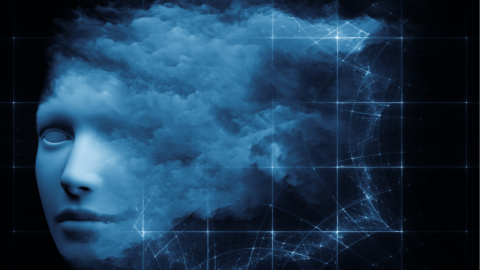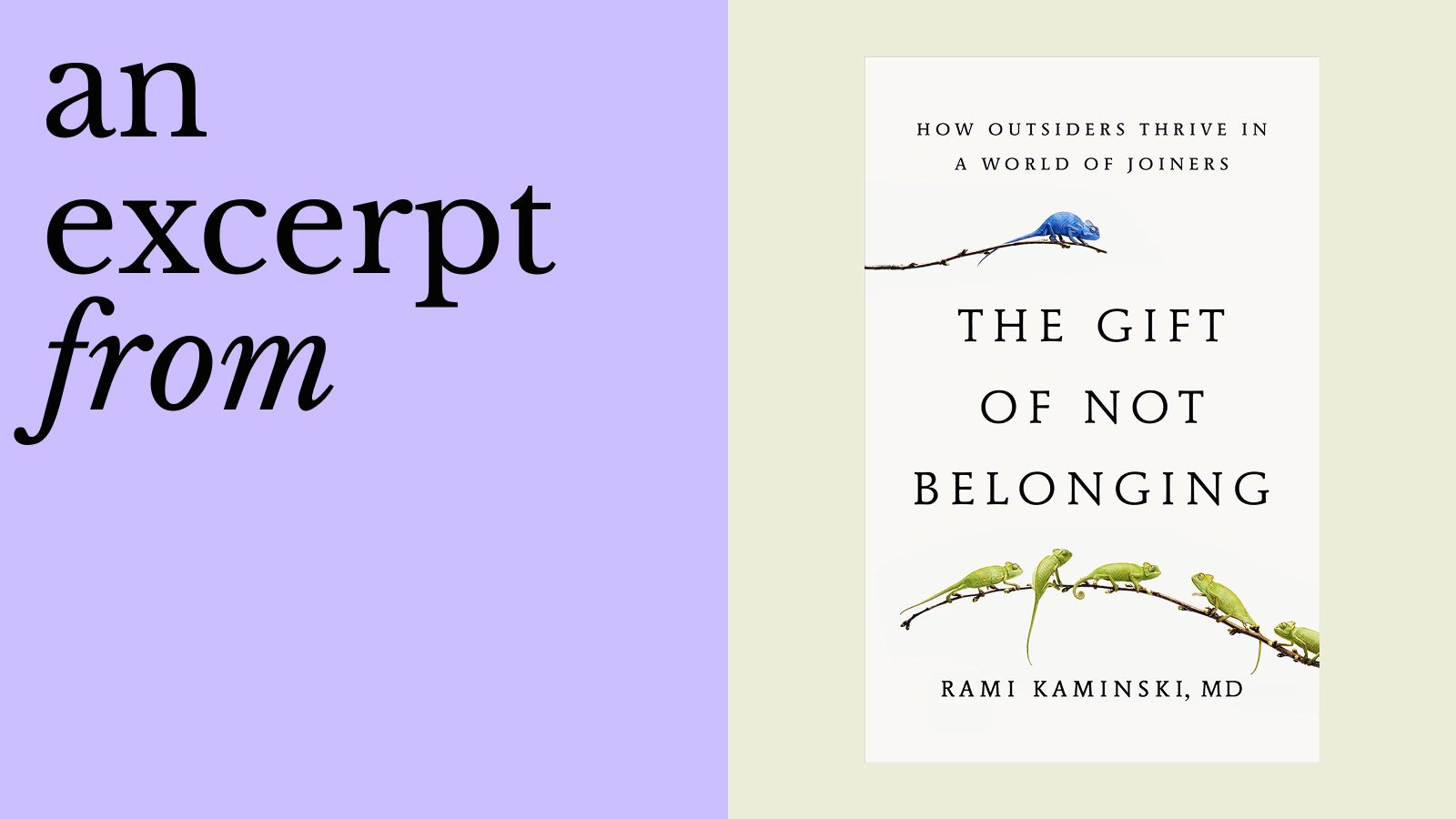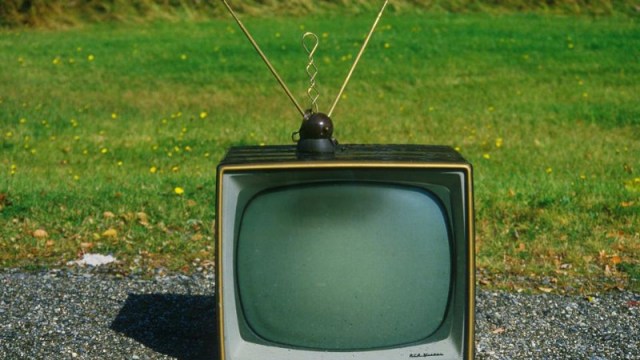Consciousness in the cloud?

“Through our eyes, the universe is perceiving itself. Through our ears, the universe is listening to its harmonies. We are the witnesses through which the universe becomes conscious of its glory, of its magnificence.”
That quote, from British philosopher Alan Watts, reminds us that we humans have access to something special: the spark of awareness we call consciousness combined with the capacity to reflect on that experience.
Defining consciousness can be incredibly complex. Entire books have been written on the topic. But in the context of human flourishing and this essay, when I say “consciousness,” I’m simply referring to the feeling of being—the fact of knowing phenomenon from a first-person perspective. Consciousness is a silent, ever-present field of awareness in which all personal experience arises, and it’s unique to each conscious entity. It is your first-person experience, your subjectivity, the fact that it is like something to be you at all.
Importantly, I’m not talking about the contents of consciousness: the quality of awareness (sleepy or alert), the characteristics of conscious experience, or the phenomenon of which one is conscious (sensations, memories, thoughts, emotions, etc.). All of those are important to other aspects of human flourishing and the field of consciousness studies, but they aren’t the focus here.
To help tap into this, ask yourself, “Am I aware?”
Often this simple instruction, sometimes given in meditation, can help to appreciate what I mean by consciousness. When you answered that question (presumably) in the affirmative, how did you know? There was probably a subtle shift in your experience that emphasized the existence of the pervasive background state which is consciousness. The fact that you are aware/conscious/having this experience is the only thing about which it is impossible to be wrong.
I’ll admit up front that there’s a fair bit of speculation to follow, but by drawing on your own intuitions about consciousness and your own first-person experience, I hope to convince you that my conjectures are accurate as to the nature of consciousness—the central truth of our existence.
Consciousness and flourishing
Consciousness is crucial to our flourishing, but we often don’t think of it when enumerating the conditions for human flourishing—it’s usually taken as an assumption, but this might not always be a safe one. I’d like to pull the consciousness criteria into the discussion on human flourishing because I think its importance and its mechanics are under-appreciated in many prominent discussions of the future of humanity with respect to advances in biotechnology, particularly as we consider popular conceptions of brain-machine integration and mind uploading—which many believe will be carried out this century.
In short, I think any proponent of mind-uploading should seriously question whether their proposal preserves what most people care about most deeply when they contemplate a longer life or any sort of immortality: the preservation of their consciousness—just being there at all to experience their supernaturally long lives.
What about brain uploads?
In many quarters of Silicon Valley, people are convinced that in the future we will be immortal because we have uploaded our minds to any number of biologically-independent substrates. Professor Hans Moravek wrote about this possibility in 1988, and the mission has more recently been picked up by inventor and futurist Ray Kurzweil (who predicts that we will merge our brains with superintelligent artificial intelligence by 2045), the affiliated 2045 Initiative (which imagines the “creation of a computer model of the brain and human consciousness with the … means to transfer individual consciousness into an artificial carrier”), and the nonprofit Carboncopies (who are set on “creating what [they] call Substrate Independent Minds”).
Transferring our minds beyond our biological bodies could be truly phenomenal. As one early article (republished here) imagined it, “You can be anything you like … You can be big or small; you can be lighter than air and fly; you can teleport and walk through walls. You can be a lion or an antelope, a frog or a fly, a tree, a pool, the coat of paint on a ceiling.” (I would ask if the “you” they describe really the same as the “you” you’ve always known). Kurzweil imagines a future where human-machine hybrids become so advanced that they eventually project pure information and intelligence to suffuse the universe from its origins here on earth.
Mind uploading could play out in various ways, and for the sake of argument, let’s assume they will become technologically feasible. It could be the mapping of neurons, glia, synapses and other informational aspects of the brain into a whole-brain emulation completely virtually (on hardware basically like the microchips of today or on future quantum computers) or into a reconstituted “brain” made of biological or artificial substrates. Or it could be gradually more advanced “exocortices:” prostheses which penetrate and monitor our bodies and brains and connect us to cloud computation abilities, including “backups” of our entire informational structure.
Would you really be immortal?
Let’s say you’ve completed one of these processes, and you have successfully created a perfect emulation of you that has all your memories, characteristics, personality quirks, etc. safely stored on a computer, or even instantiated into a convincing life-like robotic “clone” of you that acts just like the real you.
Have you achieved immortality? From the outside perspective, it may certainly seem like it. Without being clued in that they are talking to your digital clone, your friends and relatives might never know that they aren’t interacting with the original you. But what about from the inside perspective—would you share consciousness? I suspect that you would not, for the following reasons.
First, from a definitional perspective, it’s important to keep in mind the distinction between contents of consciousness, and consciousness itself. It’s hard to imagine that your emulation is an entirely “new” consciousness because it has all the memories and other contents of consciousness that you have. After a fresh copy is made, if you and the copy sat in a theater and watched a movie together, your experience of it and reactions would be nearly identical. But the consciousness that I’m pointing to is prior to and independent of all contents of consciousness, including memory and sensations.
Second, without the original neuronal structures that (as far as we know) enable consciousness in humans, and without a physical locus that integrates the incoming information from the two entities, they have no way to share a single consciousness. Even if we are willing to grant that your emulation or upload may be conscious (a controversial assumption, to put it lightly), it won’t be the same consciousness. Without a direct pathway to transmit information between the two entities (a physical and temporal connection), you don’t share direct access to each other’s subjective experience.
Third, I’m starting from an assumption (that many people share) that one’s subjective consciousness is a unitary experience—a single perspective that is tied to a particular body-mind. It’s a single locus that integrates incoming information and processes it to create the phenomenon that appear in consciousness. This assumption is supported by the fact that, no matter how hard we try, there has been no reliable evidence to suggest that an individual can share sense perceptions with another—“see through another’s eyes,” so to speak. If this can’t be demonstrated with identical twins, then I fail to see why it would be the case that any sort of clone, digital upload, or robotic emulation could share a consciousness with the original human.
Parenthetically, the closest humans can get to sharing consciousness with another is with conjoined twins, such as the fascinating example of Tatiana and Krista Hogan, who share a thalamus, and thus one twin can report on sensations that are happening to the other girl’s body. Even in this case, it seems there are two separate individuals that happen to share certain sensory information because of shared neural structures, rather than a single individual, though this admittedly pushes the boundaries of what it means to have a unified experience of consciousness!
Finally, consider death. The destruction of your original biological organism may be required in order to produce a high-fidelity upload, or you may die a natural death. This will likely be the case in most immortality-through-uploading scenarios because the biological brain will inevitably continue to accumulate damage and neuronal death, or at least be susceptible to accidental injury and destruction despite the most heroic efforts to extend lifespan. I suspect that in any such scenario, your original consciousness doesn’t “come with you” into your upload or emulation, no matter the substrate for the same reasons as above. If it doesn’t happen while the original you is alive, I don’t think anything fundamental changes with death.
The scary thing is, from the outside perspective, it might seem like it worked. Only from the subjective inside perspective do the lights go off. That’s why you won’t find me signing up to be uploaded, at least not with the expectation that I will continue to experience conscious existence in my upload. While this may be a sort of “digital immortality,” it does not preserve what people most value about their lives: actually being there to experience them!
A word to immortality seekers
So, to the transhumanists, the mind-uploaders, and the seekers of immortality in the non-biological realm, I just ask you to be clear on what it is you want and what you are getting. Some likeness of you may be transferred to future generations; there may be digital emulations of you, robots that look and act like you, and maybe there will even be new genuinely conscious entities that seem just like the original you. Your great-great-grandchildren can consult “you” for advice in their middle age. The seeds of your personality and intelligence may well spread throughout the universe, and a great deal of meaning and satisfaction may come from this.
But the original you (the you of right now that has an experience of seeing these words)—the continuous experience of consciousness that has been with you up to now—will, sadly, end (or whatever it is that happens after ordinary death!) with the destruction of your biological body and brain.
As a last-ditch effort, when facing imminent death, some will be willing to try anything to stay “alive” in some form. That’s why people are paying many hundreds of thousands of dollars to be frozen in liquid nitrogen upon their death or even to consider late-life euthanasia, so the brain’s structure can be preserved in the best detail available with modern science. Perhaps the reanimation of these original biological structures may revive a long-dead consciousness.
And of course, if you find a way to instantiate a biological emulation of you during your life, your relationship to it could be incredible: closer and more intimate than you could have with any partner or child, since you know literally everything about each other (except their moment-by-moment first-person experience, of course). You would want only the best for them!
There will also be edge cases for the continuation of individual consciousness. What if you take your original brainstem, thalamus, and insula (neural structures crucial to our conscious existence) and reconstruct the rest of your brain and body with artificial parts? Would that new entity maintain a continuity of consciousness? Would the real you continue to exist? Perhaps.
Unfortunately, in none of these cases can we actually know the answer—unless we are willing to do the experiment ourselves—because we can be fooled by external appearances. Only the subjective awareness within each being has a sense of its own continuity, discontinuity, or cessation.
There are a great many mysteries to consciousness and brain-uploading, and we’ve only scratched the surface here. Nevertheless, as far as this body-mind knows, there has only ever been this one locus to its consciousness.
Given that, I suggest that when we upload, back up, duplicate, or otherwise separate that which makes us who we are from our biological bodies, we maintain this crucial component of our flourishing—just being there to enjoy life in the first place—only in our original body.
Series conclusion
We have all inherited an infinitely complex background that sets the stage for our moment-by-moment mental experience. Our genetics, epigenetics, upbringing, culture, daily environment, psychological predispositions, and behaviors all contribute to our flourishing as we encounter the inevitable vicissitudes of life.
No matter what technological advancements emerge in the next hundred years, my bet is that most (probably all) of us will still be contending with disease, old age, and death, both in ourselves and in those we love. With this in mind, I think the same fundamentals of human flourishing that elevate our lives today will continue to do so. In this series we explored our biotechnological future possibilities through the lenses of social connectedness, meaning, purpose, and consciousness.
I do hope that many future biotechnological developments are incredibly helpful and positive for our species, and I hope that if we push our technologies in wise directions, guided by some of the considerations laid out in this series, that we may flourish as a species like never before.
Part three of a three-part series on human flourishing and our biotechnological future. Also check out part one and part two.
Steven Michael Crane (@stevenmcrane) is a researcher in Anthropology and Neurobiology at Stanford University working on the interdisciplinary project: The Boundaries of Humanity: Humans, Animals, and Machines in the Age of Biotechnology.
The post Consciousness in the Cloud? appeared first on ORBITER.





